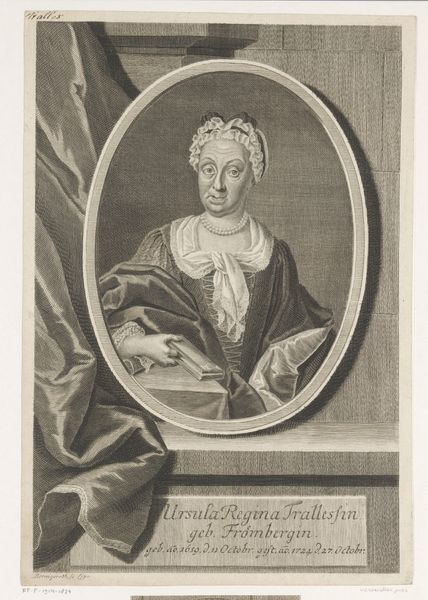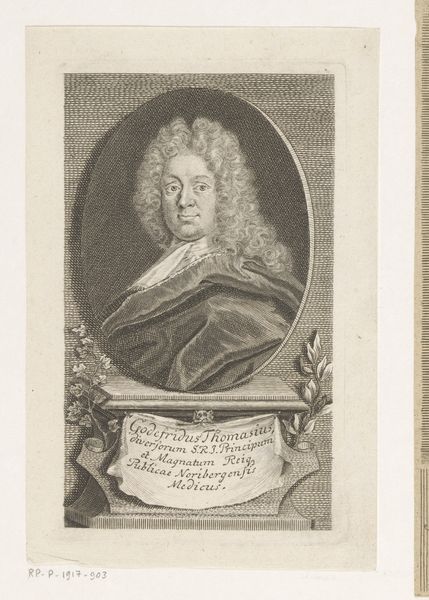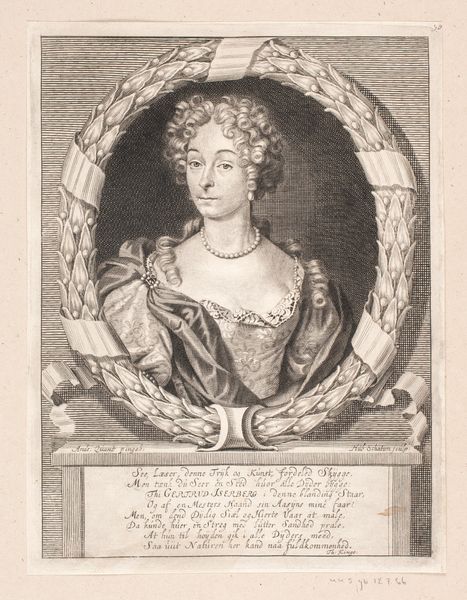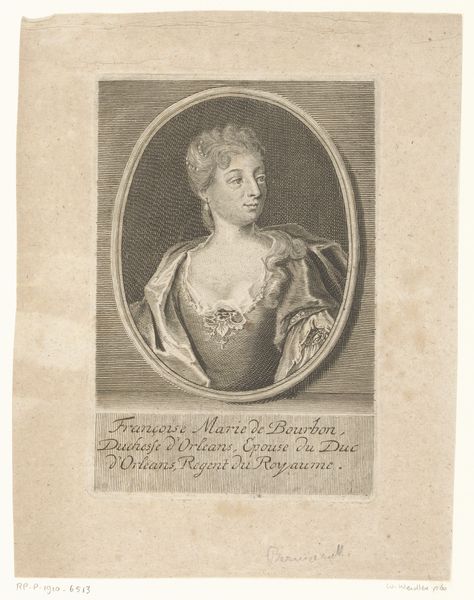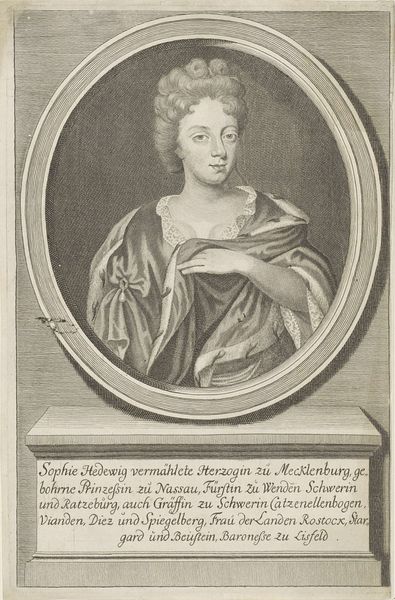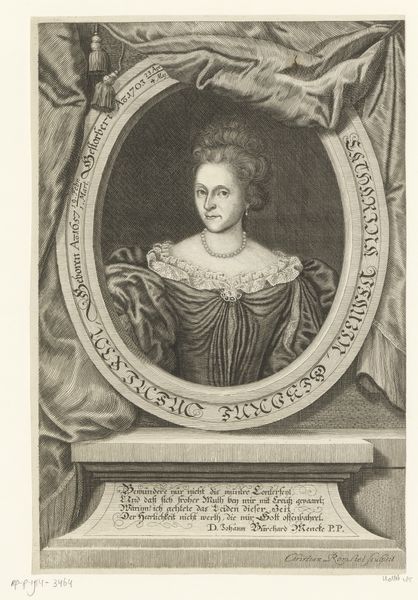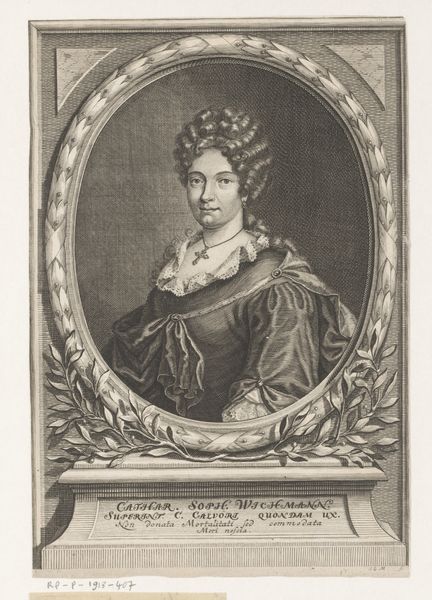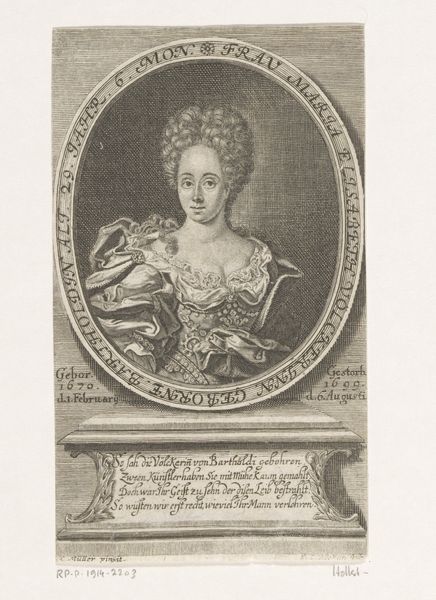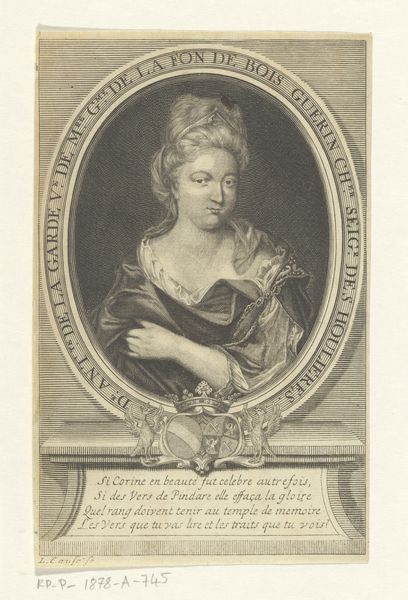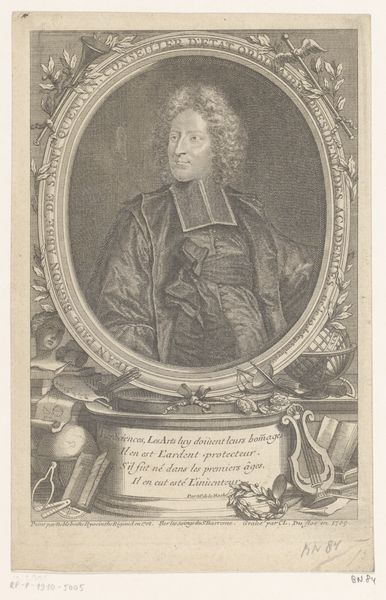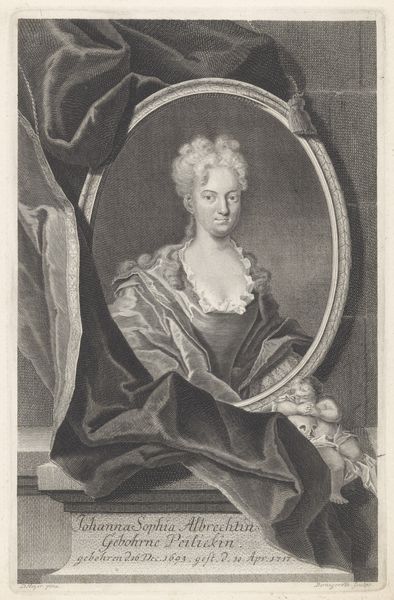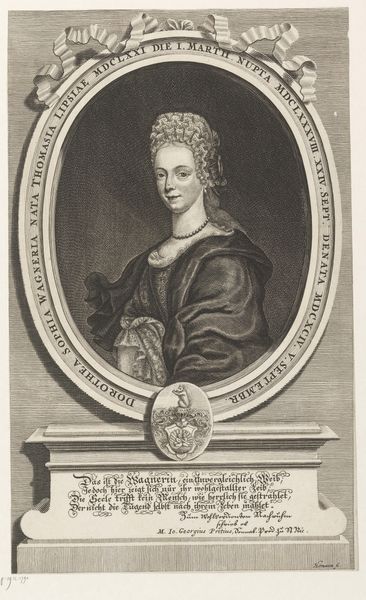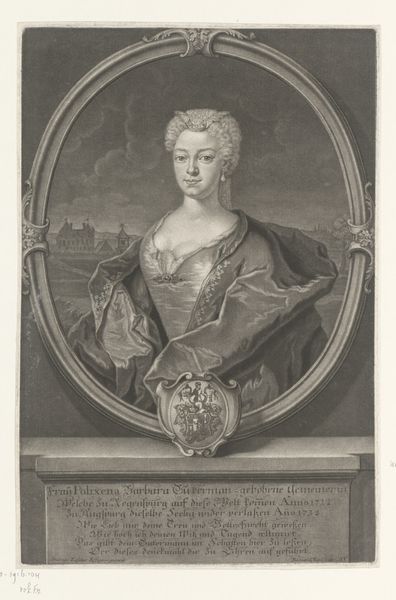
engraving
#
portrait
#
baroque
#
old engraving style
#
portrait reference
#
portrait drawing
#
history-painting
#
engraving
Dimensions: height 154 mm, width 96 mm
Copyright: Rijks Museum: Open Domain
Curator: Let’s consider this striking portrait currently on display here at the Rijksmuseum, an engraving from sometime between 1680 and 1733 by Martin Bernigeroth. It’s titled "Portret van Margaretha Susanna von Kuntsch." Editor: My first impression is one of restrained elegance. The monochromatic palette emphasizes the subject’s direct gaze and the subtle textures achieved through engraving. Curator: Indeed, there's a compelling sense of the sitter’s presence. I'm drawn to understanding Margaretha Susanna within the context of her time. Who was she? What power dynamics shaped the creation and reception of this portrait? Was she afforded more space for individuality because she was not part of the aristocracy? Editor: From my perspective, it is fascinating to consider the material processes at play here. Think about the engraver's skill: the lines etched into the copper plate, the layering and cross-hatching. Engravings democratized image production; this image could be disseminated far more easily than a painted portrait. This particular kind of production would shape labor of artisans like Bernigeroth. Curator: Exactly. The print format, as you mentioned, allowed for broader circulation, impacting the construction and projection of identity for women of this era, far removed from court life. In what ways would an image like this impact perceptions about the subject as opposed to knowledge of the real Margaretha? Editor: The controlled, almost mechanical precision speaks volumes, don’t you think? The lines dictate the fall of light on her face and clothing and creates depth without needing paint. In this image the production becomes the message, the artifice a deliberate strategy. Curator: Precisely. Thinking about the conventions of portraiture and representation allows us to understand the extent to which Margaretha Susanna actively participated in shaping her own image and influencing her place in society. How are female subjects presented during this era, compared to later historical periods? Editor: Considering how a seemingly simple object could be charged with political weight through production and use really opens up a fresh appreciation of its value. It offers such unique window into early modern craftsmanship and economy.
Comments
No comments
Be the first to comment and join the conversation on the ultimate creative platform.
